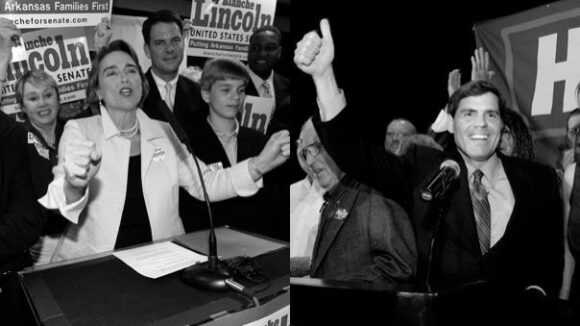Tweedle Dee Lincoln and Tweedle Dum Halter
(Source: June 2010 NRTWC Newsletter) Both Candidates in Arkansas Democrat Run-Off Back Forced Unionism Shortly after this month's National Right to Work Newsletter goes to press, incumbent U.S. Sen. Blanche Lincoln will face a run-off contest against Lt. Gov. Bill Halter as she seeks her Democratic Party's nomination for a third term. Ms. Lincoln and Mr. Halter ran neck-and-neck in Arkansas's May 18 primary, and neither received a majority of the votes. (That is why the June 8 run-off is required under Arkansas law.) Most election observers expect the run-off will also be close. But one thing is already clear in advance of the Lincoln-Halter showdown: The victor will have a track record of supporting forced-unionism power grabs and giving the back of the hand to the overwhelming majority of Arkansas citizens who support their Right to Work law and oppose tampering with it. The only substantial difference between Ms. Lincoln and Mr. Halter on the forced-unionism issue is that the senator has very recently, with an eye toward the general election this fall, tried to obscure her long history of pro-forced unionism votes. Ms. Lincoln is now suggesting to freedom-loving Arkansas employees and employers that she is an "independent" voice on labor-policy issues.

